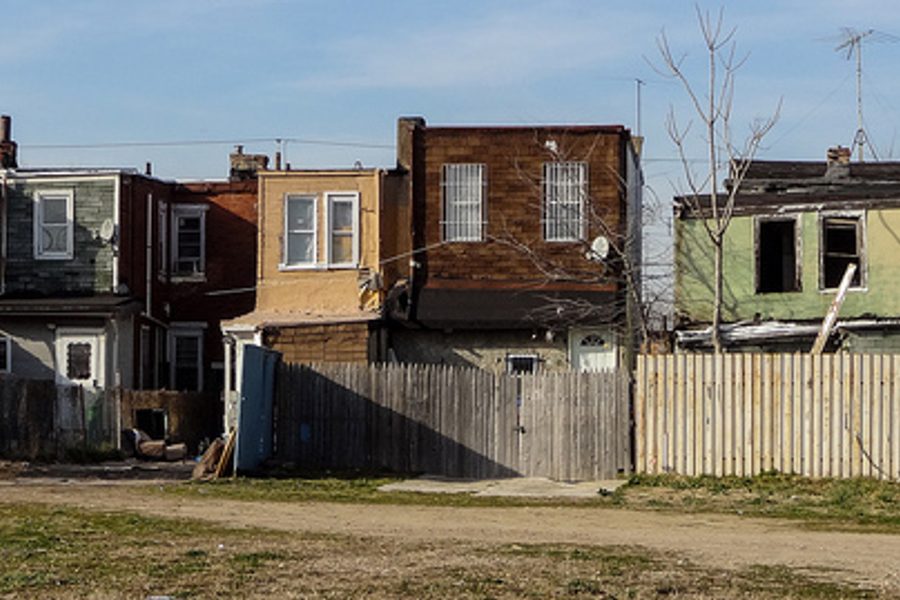
I dream’d in a dream I saw a city invincible to the attacks of the whole rest of the earth.—poet Walt Whitman, native of Camden, New Jersey
Camden, N.J. today occupies a special circle of hell reserved for de-industrialized communities whose people now live in “sacrifice zones“ – as author Chris Hedges puts it – thrown over by Corporate America in search of cheap labor. Not surprisingly, the vast majority of Camdenites are people of color: 48 percent are African-American and 47 percent are Hispanic or Latino.
At one time, Camden, proclaimed as the “City of Contented Industry,” hummed with activity and supported 125,000 people in its heyday in the 1950s. But after an astonishing 60,000 manufacturing jobs exited Camden when the shipyard, Campbell Soup and Radio Corporation of America either moved or relocated jobs, the city has descended into a state of violence reminiscent of A Clockwork Orange. It is now a desolate, burned-out shell with a population that has dwindled to around 77,000. Camden is regarded as both the nation’s poorest city and the most dangerous, according to the New York Times. Its problems deepened after Gov. Chris Christie cut state funds that had long supported city services.
“There’s nothing left,” says Hedges of Camden in a recent interview with Bill Moyers. “There is no employment. Whole blocks are abandoned. The only thing functioning are open-air drug markets, of which there are about a hundred. … And that’s why it’s such a stark example of what we’ve done to ourselves, without realizing that the manufacturing base of any country is absolutely vital to its health. Not only in terms of its economic [health], but in terms of its, you know, the cohesion of a society because it gives employment.”
However, the local political elite has responded to this situation with a strategy that is breathtaking in its contempt for the people’s dire need of police protection, not to mention for the rights of public employees. It is moving rapidly to replace the entire unionized city police force with a nonunionized county force.
On October 3, the New Jersey Civil Service Commission approved rules allowing managers of the new county police unit to make unilateral personnel decisions – such as promotions, demotions and firings – without being subject to either civil-service rules or the union contract, according to Edward Brannigan, state president of the New Jersey Fraternal Order of Police (FOP) and vice president of the national FOP. With these new powers, the city of Camden plans to lay off most of its 273-member unionized police force and replace it with a lower-paid 400-member force drawn from other Camden County communities — mostly from extremely white suburban and rural areas. Laying off more than 50 percent of the force will allow the current contract with the police union to be legally negated.
The Civil Service Commission is appointed by the governor and approved by the state Senate, not directly elected. Its latest move appears to be part of a top-down, radical re-shaping of Camden at the expense of union rights and public participation.
This strategy — championed by South Jersey Democratic power broker and billionaire George Norcross — smacks of other recent top-down actions by states, such as Wisconsin Gov. Scott Walker’s anti-public-employee assault and Michigan’s “fiscal martial law” takeover of cities such as Benton Harbor, in which a governor-appointed single manager took over the functions of now-irrelevant elected officials.
“It’s the most extreme union-busting we’ve ever seen,” declared Brannigan in an interview with Working In These Times. “Other cities and states are watching to see what will happen here. The only place where we’ve seen anything like this is Scranton, where the mayor wanted to pay police officers and other public workers the minimum wage.”
As a result of the plan, “there is no morale among our officers,“ says Brannigan. “Lots of officers are being written up on minor infractions so that they have a negative record that can be used against them. So we have people with 18-19 years on the force who have mortgages, kids in college, and no idea whether they will be working next week.”
Already hammered by previous layoffs, which jettisoned half of a police force that experts had already warned was far too small, many of Camden’s unionized police have been working 16-hour shifts.
“The public officials aren’t listening to the people who elected them,” says Brannigan. “We’ve had overflow city council meetings where the people of Camden say that they want local police officers who grew up in Camden and know the community. They’re saying that they don’t want officers coming in from suburbs and small towns,” even though police-community relations in Camden have been wracked with difficulties.
Further, the views of the county’s local police authorities have been ignored. “All twelve of the police chiefs in Camden County are opposed to the plan,” noted Brannigan. “There’s no support except for the politicians.”
On Saturday, October 13, approximately 60 police, Camden residents and activists gathered downtown to protest the plan.They were joined by Brian Coleman, the only city council member to publicly oppose the layoffs. On Monday, October 15, the hiring process for the new county force began; the city police are scheduled to be phased out by the end of the year.








